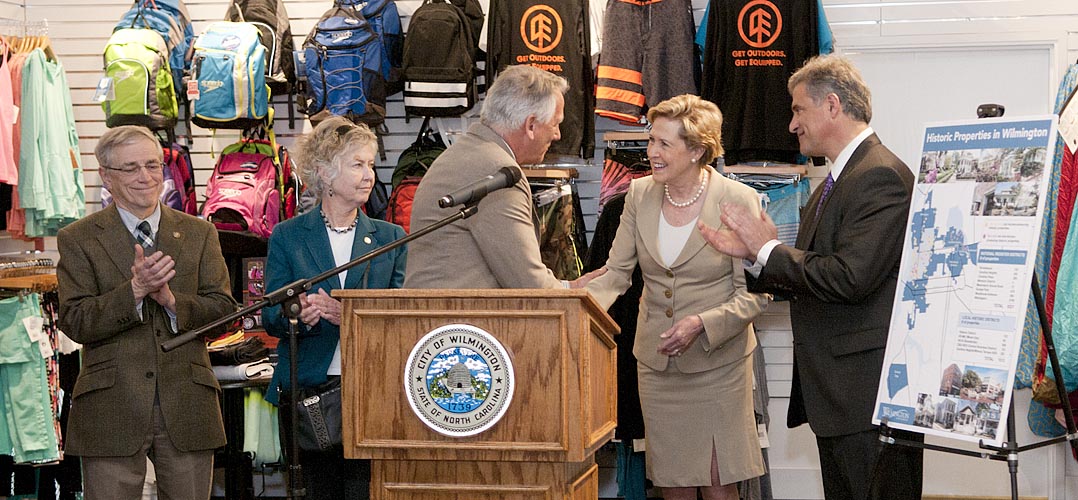The story of cities and towns across North Carolina is told through historic buildings, said N.C. Department of Cultural Resources Secretary Susan Kluttz following a March 13 tour of successful preservation projects around Wilmington’s historic districts. To ensure the story is heard by future generations, Kluttz called for revival of the state historic preservation tax credit.
“This is the North Carolina story, and it is going to be lost if we lose these buildings,” Kluttz said.
After seeing some of the 200-plus residential and commercial preservation projects completed with the credit in Wilmington, Kluttz addressed a few dozen people gathered in the recently renovated Outdoor Equipped shop, located on the first floor of the Self-Help Credit Union building at the corner of Front and Grace streets.
“I’m here because we are in crisis, and people here in Wilmington and the surrounding areas need to understand this, and they need to make it very clear to the state legislature that we have got to bring these tax credits back,” Kluttz said.
Wilmington is one of 25 cities and towns Kluttz has visited to raise awareness about the statewide significance of the historic preservation credits since January, after the credits sunset Dec. 31, 2014. Each stop has provided opportunities to celebrate successful examples of tax credit use, Kluttz said, while also reinforcing the continued potential for investment and preservation.
“I’m looking at potential. I have not been anywhere yet that didn’t have plenty left to do, and so people need to know: this is what tax credits are needed for,” Kluttz said. “And I will tell you I have seen everything stop. Everything, right now, is in limbo, waiting to see what is going to happen.”
From 1998 to 2014, owners of residential and commercial properties listed in the National Register of Historic Places could claim the state credit when filing their taxes, after the project was completed in compliance with federal guidelines. A 2013 state tax reform eliminated the credits.
Tasked by Gov. Pat McCrory to create a plan to reinstate the credit that addresses concerns about the cost and unpredictability of the credits, the Department of Cultural Resources worked with the N.C. Department of Commerce on a plan with a curbed credit, under consideration by both the House and the Senate.
Kluttz, along with Wilmington Mayor Bill Saffo, urged residents concerned about the expired credit to share their concern with elected representatives in Raleigh.
Although the state Republican Party officially disapproves of tax incentives, Kluttz said a numbers-focused discussion overlooks the cultural significance of the buildings that benefit from the credit. She also challenged the idea that the credit constitutes a financial burden or risk to the state.
“There is no pile of state money. There is no state risk, and I think one of the most important things about this is, the owner takes the risk,” Kluttz said.
The $4.7 million renovation of the Self-Help building, the largest commercial project tackled in Wilmington, would not have been possible without the tax credit, said Self-Help Policy and Media Director David Beck.
The credit generated more than $1.67 billion of private investment in 90 of North Carolina’s 100 counties from 1998 to 2014.
email [email protected]




